Unmanned aerial vehicles (UAVs) are playing a more central part in fire suppression, reconnaissance, search and rescue, and other functions for fire departments, with some agencies setting up special operations units to handle aerial responsibilities. And with drone manufacturers continually improving their aircraft and the equipment they carry, departments are upgrading to more efficient, persistent, and technologically able unmanned aerial systems.
Michael Leo, captain of the Robotics Drone Unit at the Fire Department of New York (FDNY), says the department’s ded-icated drone unit operates Command Tactical Unit 1 (CCU-1), a GMC quad cab pickup truck staffed 24/7 by an officer, pilot/operator, and visual observer running out of Roosevelt Island. “We carry several different DJI drones and a Fotokite tethered drone that’s permanently mounted on top of CCU-1 for when we need persistent aerial operations,” Leo says.
CCU-1 carries a DJI M300 UAV with payloads that include a visual light camera with pan/tilt/zoom (PTZ) capabilities, a thermal camera, a spotlight, and a speaker, Leo points out. It also carries a DJI M30T UAV with a visual light camera with zoom and wide-angle capabilities, a thermal camera, and a laser rangefinder to measure distance and identify GPS coordinates, he says. It also includes a DJI Mavic 3E, which is used mostly for mapping, and a DJI Avata, a small drone with a visual camera and spotlight that the FDNY uses for indoor aerial operations.
The FDNY also runs Car 11X, Leo’s command vehicle from which he manages airspace and deconflicts with other drone and helicopter agencies, and Command Tactical Unit 3, three utility terrain vehicles that each carry a DJI drone.
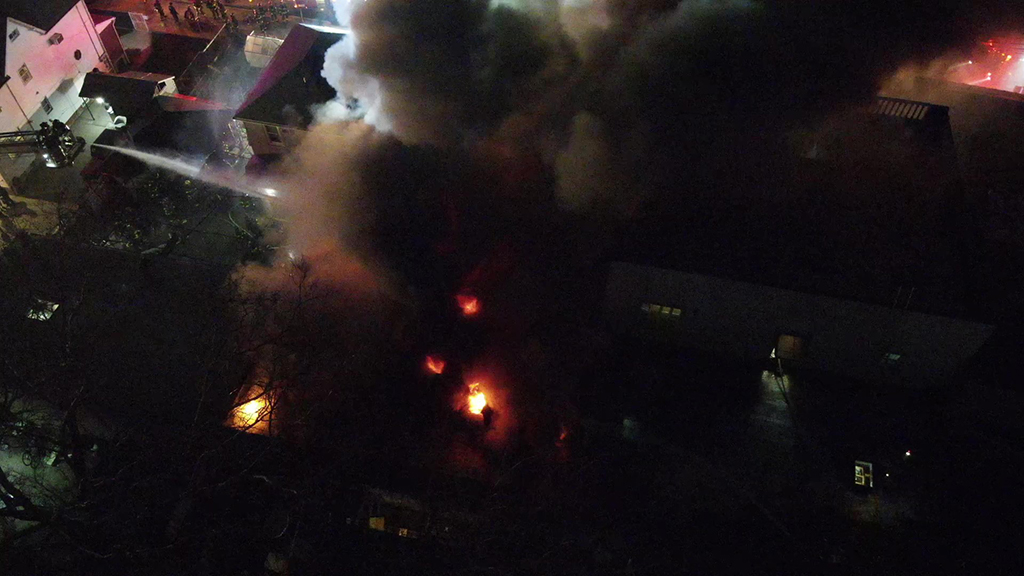
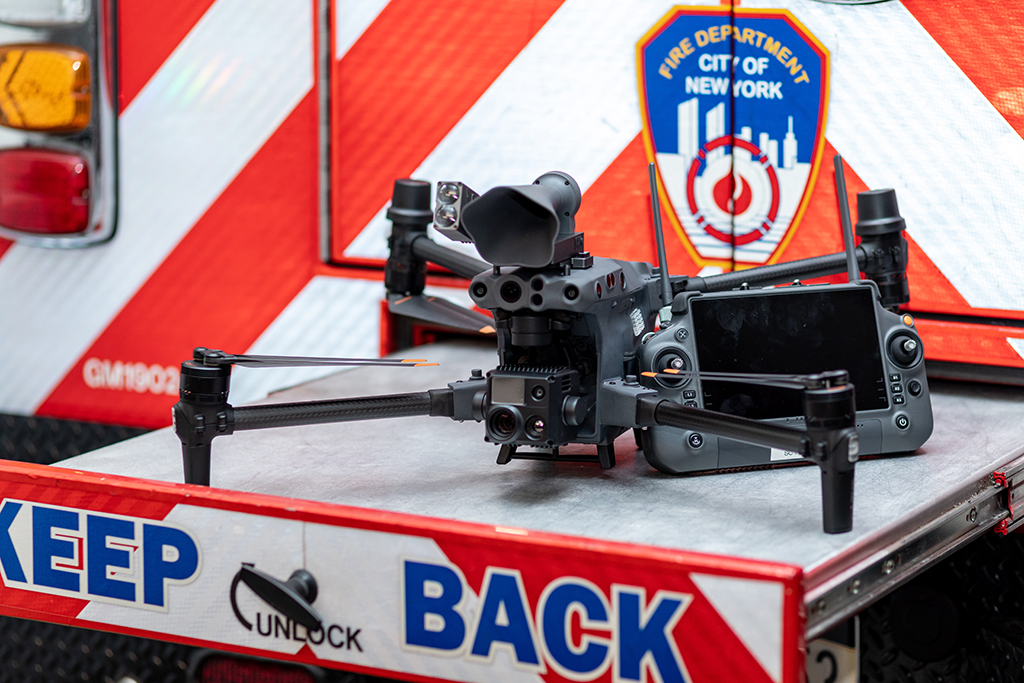
“Each mission is different,” Leo observes. “If we’re looking for someone missing in the water, we usually use the M300 because of its large spotlight and night vision sensors. For structure fires, we’ll fly the M30 and use its thermal sensors to track firefighters on a roof, track which way the fire is moving, identify hot spots for the crews, and identify firefighter escape routes. For night operations, we’ll use the M300 with its large spotlight that can light up an entire rooftop, use its infrared camera to check all four sides of a building, scan the scene, and give the incident commander a 360-degree picture of the situation.”
Leo notes that for a parking garage collapse in 2023, the FDNY used several different drones, including a ground robot. And, while on a recent crane fire, his drone team was able to fly a M30 to a position where it gave the incident commander (IC) views of the fire from above, below, and alongside. “The drone can fly between buildings where a helicopter can’t go, and our drone allowed firefighters to see how far and where their water stream was hitting on the crane,” he adds.
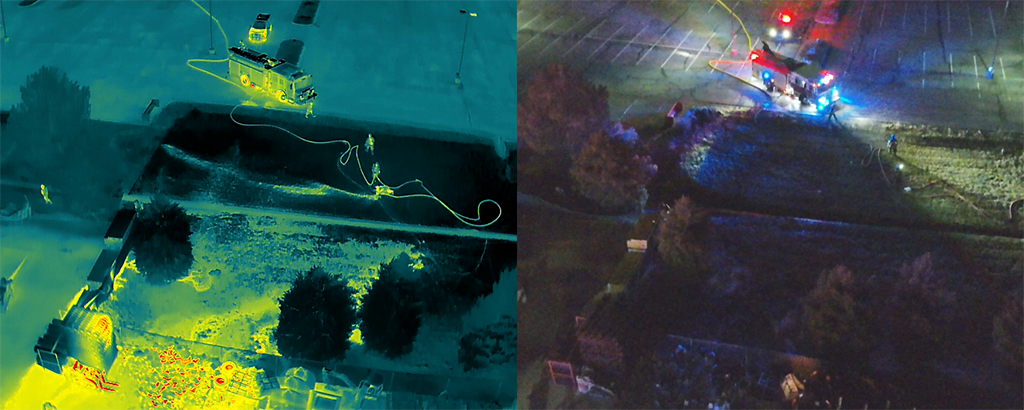

Chris Carnahan, emergency communications manager for South Metro (CO) Fire Rescue, says South Metro recently did an inventory of what its drone program has been doing, the types of calls it’s been on, and which responses it should be included in. “The program is now built into our response plan where the drones are beneficial for certain types of incidents,” Carnahan points out. “Flying drones on wildland and brush fires is our bread and butter, giving us an eye in the sky with a view of fire behavior, which is also helpful in searching for hot spots.”
Carnahan adds that with three reservoirs in the South Metro district, the drones have been very helpful on water rescue calls. “We get a lot of human traffic on two of the reservoirs with paddle boarders and other water sports,” he says. “We use the drones to get to a last known location and then perform a super quick wide area search to locate the missing person. Recently, we used a drone to do a swift water rescue of a tuber in a river, where the drone pinpointed him for the rescue team.”
South Metro runs a Ford F-150 that carries a DJI M30 as its on-call unit, backed up by a Chevy Tahoe carrying a M30, another Tahoe with a Mavic 3, and a major response vehicle of a RAM 5500, carrying a M300 and M30.
J.J. Halsey, special operations captain for the Colorado Springs (CO) Fire Department, says the impetus for his department’s special operations unit was to aid in wildland fires and search and rescue situations. “The program has evolved since it went into operation, and now we operate on almost every structure fire to give an aerial dimension for the incident commander,” Halsey points out. “In some wildland situations where the ICs are in an area occluded by smoke, terrain, or topography, the drone’s aerial view allows them to strategically deploy resources. The unit has been a real game changer for us.”
Halsey says a special operations unit works every shift with a captain and two lieutenants handling the drones. “We have a Chevy Suburban with a slide-out in the back that holds a DJI Matrice 30T, which has a thermal camera, a digital zoom camera, a laser rangefinder to get coordinates for rescue, a strong spotlight, and a loudspeaker for one-way communication; a Mavic 3 Enterprise; and a Matrice 300, where we have the ability to change out different cameras and a spotlight,” he notes. “We are looking to purchase another 30T with a grab system that can carry a personal flotation device, a tourniquet, a radio, or Narcan.”
Matt Sloane, chief executive officer of Skyfire Consulting, says drone programs have matured in the fire, rescue, and emergency management community. “Drones are a force multiplier for emergency responders,” Sloane observes. “It takes one person to operate the drone but serves the purpose of three or four people.”
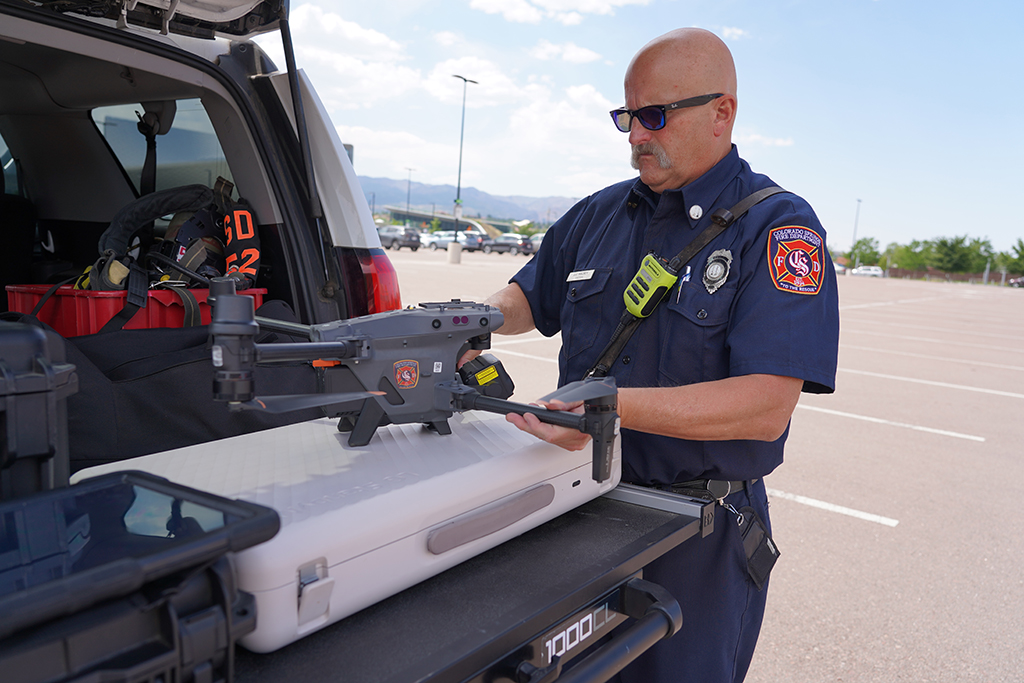

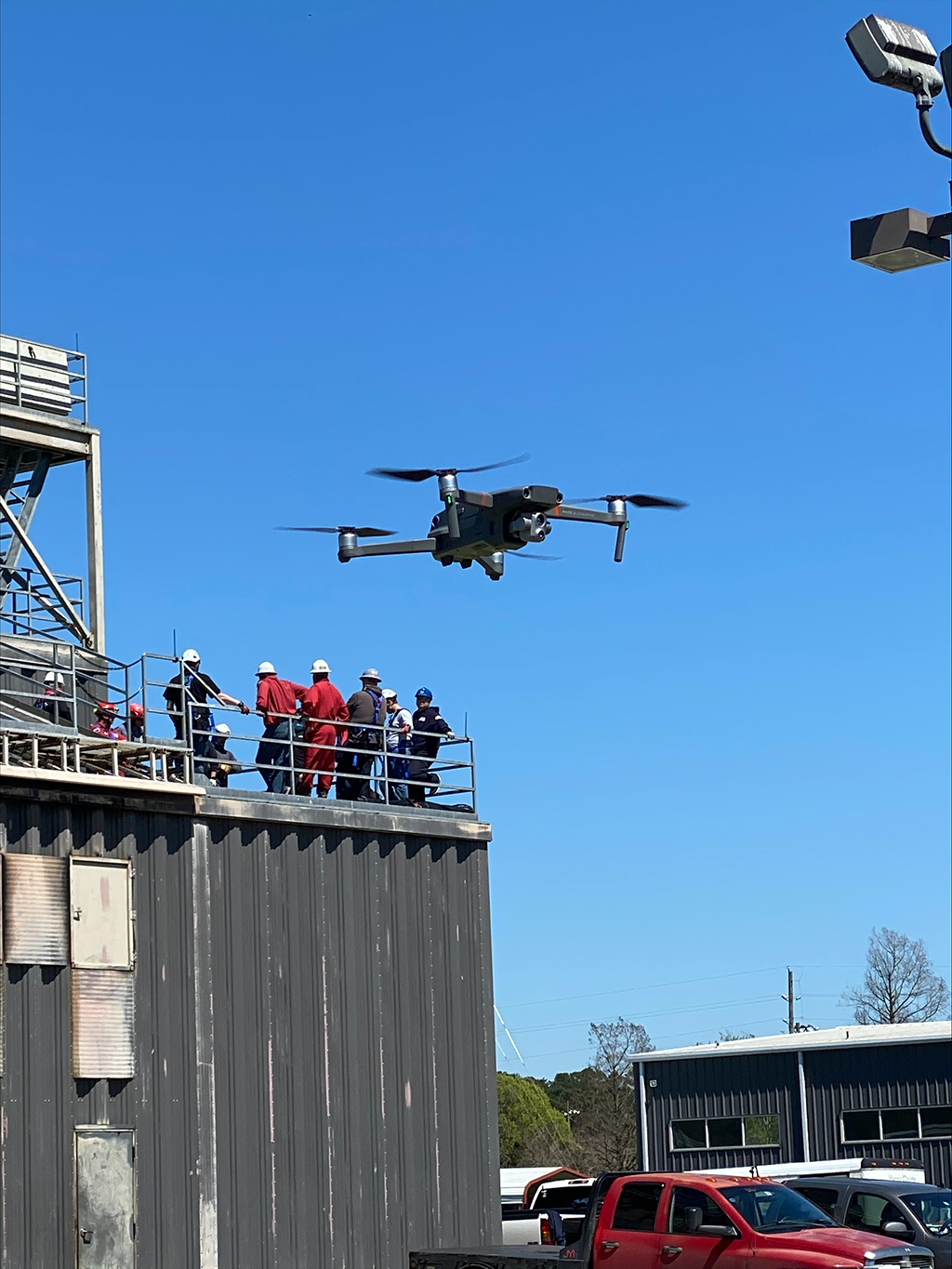
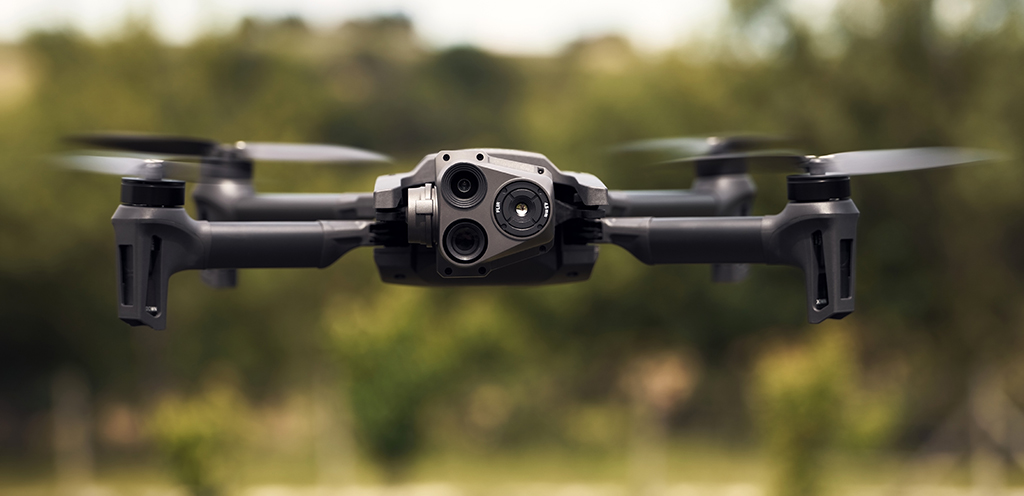
Sloane adds that where drones are used—the types of calls—is expanding, from structure fires to give a three-dimensional survey to search and rescue and hazmat responses. “Drones are being used in confined spaces, like in the Surfside building collapse in Miami and the parking garage collapse in New York City,” he says. “They also are being used in tandem with dog teams for search and rescue and in accident scene reconstruction to get a road opened up more quickly.”
Bruce Ireland, director of OEM sales for Darley, says most of Darley’s drone customers are purchasing models made by DJI and Autel. “They are buying the DJI 3T and M30T models, which are flight-ready in a case and have thermal and digital zoom cameras,” Ireland says, “and also the Autel 640T with thermal and digital zoom cameras and the Max4T, where you can swap out the thermal camera payload to a night vision payload.”
Sean Phetchanpheng, Darley’s robotics sales engineer, says new players are popping up in the U.S. emergency response drone market. “Parrot is the biggest U.S. maker of drones. Its units have a smaller form factor than others and are easy to deploy, he says. Also, Hoverfly makes a tethered drone, and Wingtra is a vertical takeoff and landing (VTOL) system that can be used for search and rescue, accident reconstruction, and hazardous materials situations.”
Wayne Baker, director of stakeholder engagement for DJI, says his company has a new camera system for its Matrice 350 drone. “It’s great for fires and search and rescue with a thermal imaging camera that has 1,280×1,024 resolution compared with typical 640-pixel-resolution thermal cameras,” Baker points out. “It provides high-detail imagery and has the ability to look at a thermal image at 1,600°C, which is more than 2,000°F. It has full color and black-and-white night vision capability, infrared laser marking and laser range finding with GPS coordinates, and a built-in spotlight.”
Peter Wambolt, Parrot’s program coordinator, says his company’s ANAFI USA drone is the one most used by emergency responders. “The drone has a RGB 31x zoom camera and a thermal imaging camera, five-axes hybrid stabilization, a service ceiling of 6,000 m, and deploys in less than a minute through hand launching,” Wambolt says. “This drone was designed on a U.S. Army contract for search and rescue, so it’s backpack portable, weighs under two pounds, and has 32 minutes of flight time.”
ALAN M. PETRILLO is a Tucson, Arizona- based journalist, the author of three novels and five nonfiction books, and a member of the Fire Apparatus & Emergency Equipment Editorial Advisory Board. He served 22 years with the Verdoy (NY) Fire Department, including in the position of chief.

